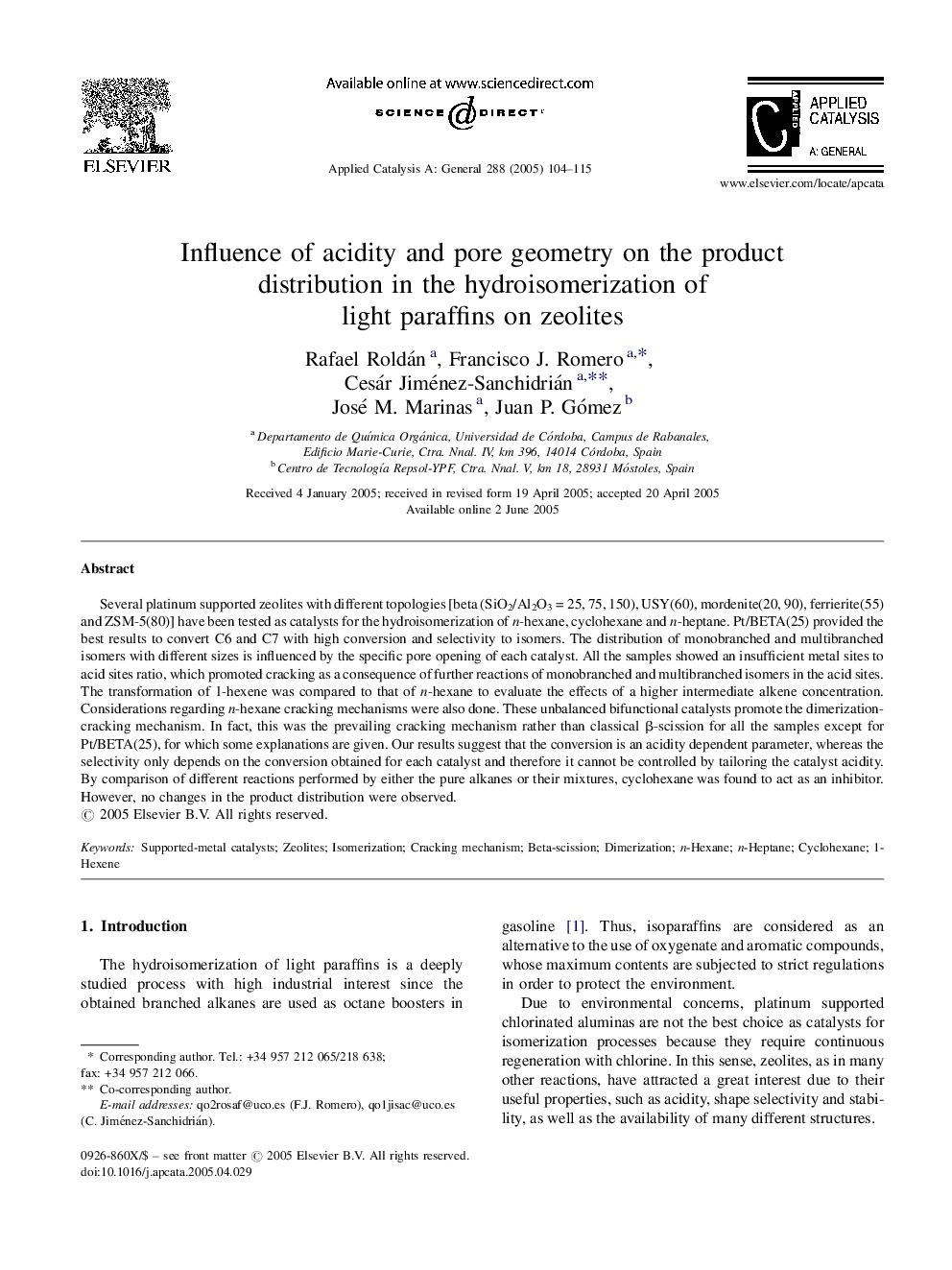| Article ID | Journal | Published Year | Pages | File Type |
|---|---|---|---|---|
| 9607921 | Applied Catalysis A: General | 2005 | 12 Pages |
Abstract
Several platinum supported zeolites with different topologies [beta (SiO2/Al2O3 = 25, 75, 150), USY(60), mordenite(20, 90), ferrierite(55) and ZSM-5(80)] have been tested as catalysts for the hydroisomerization of n-hexane, cyclohexane and n-heptane. Pt/BETA(25) provided the best results to convert C6 and C7 with high conversion and selectivity to isomers. The distribution of monobranched and multibranched isomers with different sizes is influenced by the specific pore opening of each catalyst. All the samples showed an insufficient metal sites to acid sites ratio, which promoted cracking as a consequence of further reactions of monobranched and multibranched isomers in the acid sites. The transformation of 1-hexene was compared to that of n-hexane to evaluate the effects of a higher intermediate alkene concentration. Considerations regarding n-hexane cracking mechanisms were also done. These unbalanced bifunctional catalysts promote the dimerization-cracking mechanism. In fact, this was the prevailing cracking mechanism rather than classical β-scission for all the samples except for Pt/BETA(25), for which some explanations are given. Our results suggest that the conversion is an acidity dependent parameter, whereas the selectivity only depends on the conversion obtained for each catalyst and therefore it cannot be controlled by tailoring the catalyst acidity. By comparison of different reactions performed by either the pure alkanes or their mixtures, cyclohexane was found to act as an inhibitor. However, no changes in the product distribution were observed.
Related Topics
Physical Sciences and Engineering
Chemical Engineering
Catalysis
Authors
Rafael Roldán, Francisco J. Romero, Cesár Jiménez-Sanchidrián, José M. Marinas, Juan P. Gómez,
